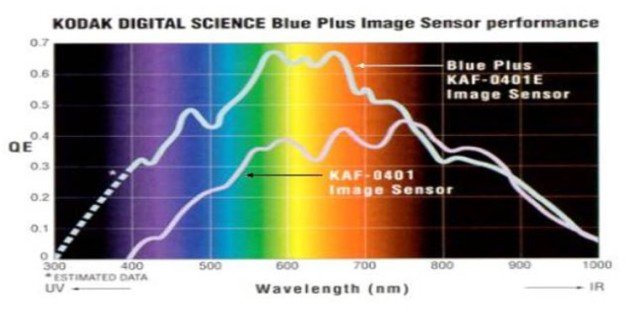Quantum efficiency
Remarque :
The Quantum Efficiency (QE) gives the quality of the light/charge transformation for a CCD sensor. It is about \(40\%\) CCDs illuminated in front. It represents \(40\text{ electrons}\) generated for \(100\) incident photons.
Complément :
Quantum efficiencies superior to \(90\%\) can be reached for some wavelengths, with some backlit, thinned CCD (the photographic films and human eye have a maximum quantum efficiency of ...\(10\%\)).
The polysilicon transmittance drastically falls for wavelengths tending to \(600\text{ nm}\), and for wavelengths inferior to \(400\text{ nm}\), polysilicon is opaque.
We can also extend the range of spectral sensitivity by using phosphors arranged on the surface of the CCD (Fig. 19). These phosphors absorb for example the ultraviolet (\(120\) to \(450\text{ nm}\)) to reemit in the window of maximum sensitivity of the component (\(540-580\text{ nm}\)).
Attention :
All CCD sensors are illuminated by front until they are thinned and backlit. Then they pass from a few hundreds to a few tens of micrometers thick.
